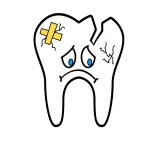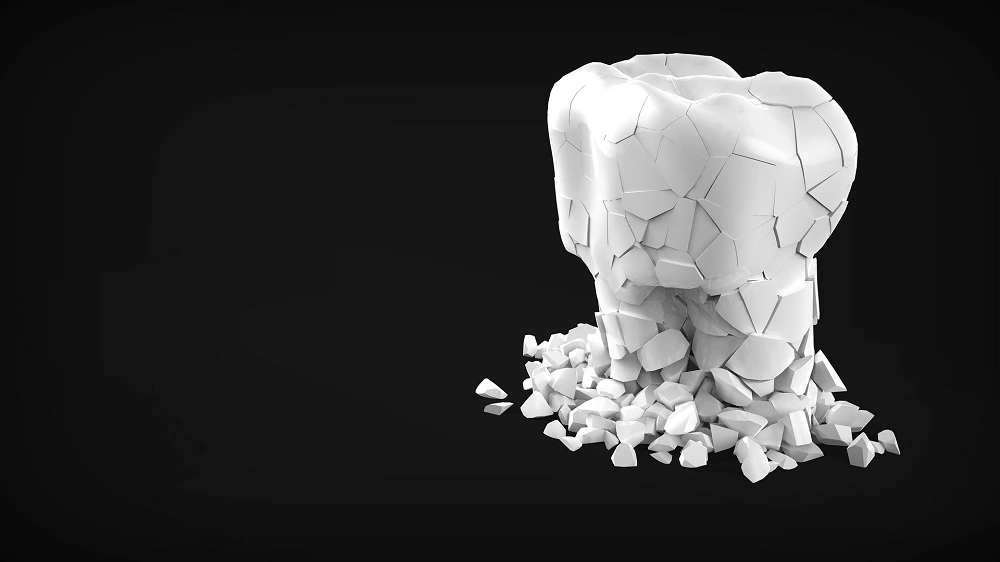Last Updated on: 4th December 2024, 04:51 pm
Tooth decays are small holes in a tooth through which bacteria have managed to enter and deteriorate the pulp inside, generating large internal craters until they reach the root of the tooth and cause an infection, so this raises the question- can tooth decay be reversed? When brushing is not done correctly or we do not practice good oral hygiene habits, food and sugars accumulate in the teeth, which added to the bacteria found in the mouth forms tartar, plaque, and eventual cavities.
The most common dental consultations are for dental caries. On average, over half of children and adolescents have suffered from caries. In the adult population, about 90% have experienced caries. When cavities are not treated, very painful complications can range from gingivitis to an abscess and the death of the tooth. This is why it is so important to prevent, reverse, and treat them in a timely manner.
What are dental caries?
In the mouth, we house microorganisms such as viruses, bacteria, and fungi, but they do not grow due to saliva and oral hygiene (brushing, dental floss, and rinsing) that help eliminate food residues and tartar that favor the growth of these microorganisms.
 Some bacteria are deposited in different places in the oral cavity, such as the tongue, teeth, lips, etc and they all cause nasty effects on our mouth. Some start the metabolic and digestive process the moment we chew food; however, others deteriorate the teeth and enamel layer, which when weak forms white spots that in time become caries. They are generated by the acid produced by bacteria when metabolizing sugars.
Some bacteria are deposited in different places in the oral cavity, such as the tongue, teeth, lips, etc and they all cause nasty effects on our mouth. Some start the metabolic and digestive process the moment we chew food; however, others deteriorate the teeth and enamel layer, which when weak forms white spots that in time become caries. They are generated by the acid produced by bacteria when metabolizing sugars.
Initially, we have bacteria and sugars or starches (derived from foods such as milk, bread, cookies, sweets, soft drinks, and juices) that in combination form dental plaque (a sticky colored layer). Then the bacteria are converted into acids, favoring growth, and it begins to wear down the external surface of the teeth (the enamel).
What are the steps in the formation of tooth decay
Bear in mind that caries are bacteria that enter the tooth through plaque, which over time becomes tartar. A series of processes are initiated through which bacteria enter the tooth:
- Demineralization: this occurs with the exposure of enamel to acids produced by bacteria.
- Deterioration of the enamel: after the white spots appear, demineralization continues and holes (caries) can be seen in the teeth.
- Deterioration of the dentin: when caries have penetrated deeply, it reaches the dentin under the enamel. Pain may already be present at this stage.
- Decay of the pulp: this is the final stage of a cavity since it has reached the pulp, where the nerves and blood vessels of the tooth are located. At this point, it becomes an infection, there is severe disabling pain, and the inflammation is significant.
- Abscesses: they happen when the decay has already crossed the pulp and below this pocket of pus forms. Sometimes, it is not noticeable, but they are usually very painful.
It is not established how long a cavity takes to develop or become an abscess since it is multifactorial. However, poor oral hygiene accelerates the process and exacerbates it more quickly.
What are the symptoms and complications of having tooth decay?
It is important to know the symptoms of a toothache caused by cavities and the possible complications. This will allow you to easily identify any unpleasant condition in your teeth and gums or that of your children.
Symptoms
- Toothache
- Tooth pain when eating or drinking something hot or cold
- Tooth pain when eating or drinking something sugary
- Gray, yellow, bright white, or brown stains on the teeth
- Holes you can feel or see in the teeth
- Swelling around your teeth or jaw
- Bad breath from cavities
- Unusual taste in the mouth
Complications
- Dental abscess
- Pain that interferes with daily life
- Weight loss or nutrition problems due to eating complications
- Tooth loss, which affects appearance, confidence, and self-esteem
- Rarely, the abscess may become complicated and spread the infection to other parts of the body
- Broken or damaged teeth
Generally, cavities develop more easily in the back teeth or molars; they rarely occur in the front teeth.
Risk factors that cause cavities
The following factors increase the chance of tooth decay:
- Not brushing and flossing teeth regularly and adequately
- Snacking or drinking frequently
- Tooth location
- Eating a lot of sugary foods (carbonated drinks, sweets, desserts, cakes, cookies, ice cream, and flavored milk, among many others).
- Eating foods rich in carbohydrates such as bread, chips, etc.
- Dry mouth (xerostomia) due to medication or other health conditions
- Gastroesophageal reflux disease (GERD) or heartburn reflux
- Insufficient fluoride
- Smoking
- Eating disorders such as anorexia and bulimia, fillings or dental devices
How can tooth decay be reversed?
There are several methods how to fix tooth decay. It takes the right approach and proper management. With the recommendations below,we can prevent teeth from getting cavities.
Caries treatment
This is carried out by a dentist. Once the presence of a cavity is confirmed or when the person’s pain causes a dental emergency, it is likely due to a cavity, mandating treatment.
- Fluoride treatment: effective when caries have just begun to appear to reverse it. It also provides protection.
- Fillings: this form of restoration is used when the cavity is a little deep in the first stage. It is removed and the filling of choice is applied.. They are tooth-colored resins for aesthetic results.
- Inlays or onlays. These are used for a large cavity, not a candidate a normal filling.
- Crowns: when there is extensive depth or the tooth is weak, it may have to be removed; You can replace all or a portion of the tooth with a porcelain or metal crown.
- Endodontics: At the stage where the decay reaches the pulp, root canal treatment or endodontics may be required to kill the nerve and preserve the tooth.
- Exodontics: this entails the extraction of the tooth. It occurs in the advanced stage when the tooth cannot be recovered and it is necessary to remove it.
Prevention of tooth decay
The following factors will help you maintain healthy teeth and show a beautiful smile:
- Brushing with fluoride toothpaste after each meal.
- Using dental floss and mouthwash
- Seeing a dentist regularly and check-ups
- Using sealants to protect teeth
- Consuming water to wash out the mouth after meals
- Eating at normal hours
- Opting for the best and healthy foods
- Considering fluoride treatments
- If you are sensitive to caries, consult your dentist for a course of antibiotics as prophylaxis.
- Products that contain fluoride that helps maintain balance in the mouth.
Tooth decay is commonly seen in dental offices. In its early stages, it is easily cured. Demineralization can occur on a daily basis; however, brushing with fluoride keeps bacteria at bay.
Bibliography
- National Institute of Dental and Craniofacial Research (Internet). The Tooth Decay Process: How to Reverse It and Avoid a Cavity. Published on Aug, 2022 (accessed on Oct 11, 2022). Available in: https://www.nidcr.nih.gov/health-info/tooth-decay/more-info/tooth-decay-process
- WebMD Editorial Contributors. What to Know About Reversing Tooth Decay. WebMD (Internet). Published on Jun 16, 2021. (Accessed on Oct 11, 2022). Available in: https://www.webmd.com/oral-health/what-to-know-about-reversing-tooth-decay
- Division of Oral Health, National Center for Chronic Disease Prevention and Health Promotion. Cavities. Center for Disease Control and Prevention (Internet). Published on Jun 25, 2021. (Accessed on Oct 11, 2022). Available in: https://www.cdc.gov/oralhealth/fast-facts/cavities/index.html#:~:text=Among%20adults%20aged%2020%20and,had%20at%20least%20one%20cavity.&text=1 %20in%204%20adults%20aged,has%20at%20least%20one%20cavity.
- Mayo Clinic Staff. Cavities/tooth decay. Mayo Clinic (Internet). Published on Mar 19, 2022. (Accessed on Oct 11, 2022). Available in: https://www.mayoclinic.org/diseases-conditions/cavities/symptoms-causes/syc-20352892
- NHS (Internet). Tooth decayed. Published on Mar 22, 2022. (Accessed on Oct 11, 2022). Available in: https://www.nhs.uk/conditions/tooth-decay/
- Lockett E, Frank C. Can You Reverse a Cavity? Healthline (Internet). Published on Dec 10, 2020. (Accessed on Oct 11, 2022). Available in: https://www.healthline.com/health/can-you-reverse-a-cavity



